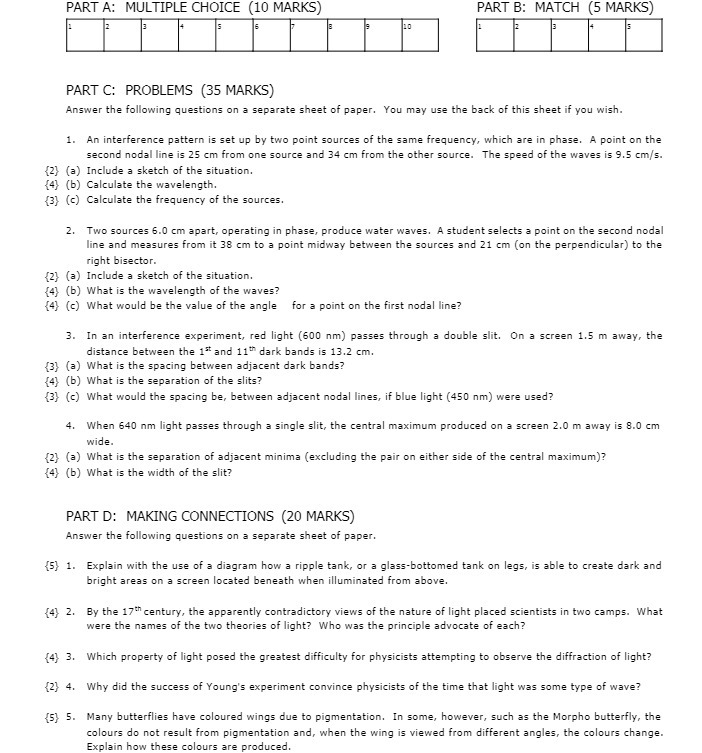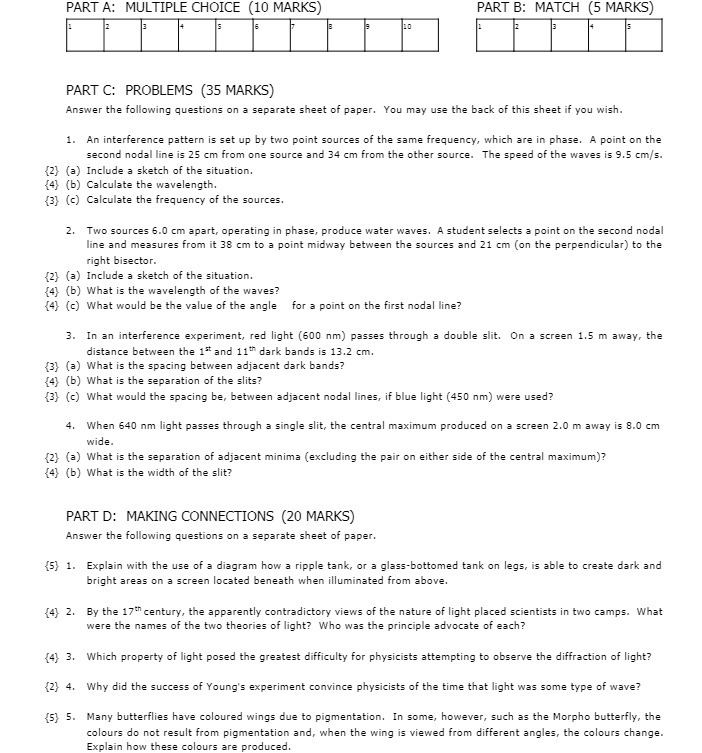
PART A: MULTIPLE CHOICE (10 MARKS) PART B: MATCH (5 MARKS) PART C: PROBLEMS (35 MARKS) Answer the following questions on a separate sheet of paper. You may use the back of this sheet if you wish. 1. An interference pattern is set up by two point sources of the same frequency, which are in phase. A point on the second nodal line is 25 cm from one source and 34 cm from the other source. The speed of the waves is 9.5 cm/s. [2) (a) Include a sketch of the situation. (4) (b) Calculate the wavelength. (3) (c) Calculate the frequency of the sources. 2. Two sources 6.0 cm apart, operating in phase, produce water waves. A student selects a point on the second nodal line and measures from it 38 cm to a point midway between the sources and 21 cm (on the perpendicular) to the right bisector. (2) (a) Include a sketch of the situation. (4) (b) What is the wavelength of the waves? (4) (c) What would be the value of the angle for a point on the first nodal line? 3. In an interference experiment, red light (600 mm) passes through a double slit. On a screen 1.5 m away, the distance between the 1" and 11" dark bands is 13.2 cm. (3) (a) What is the spacing between adjacent dark bands? (4) (b) What is the separation of the slits? (3) (c) What would the spacing be, between adjacent nodal lines, if blue light (450 nm) were used? 4. When 640 nm light passes through a single slit, the central maximum produced on a screen 2.0 m away is 8.0 cm wide. (2) (a) What is the separation of adjacent minima (excluding the pair on either side of the central maximum)? (4) (b) What is the width of the slit? PART D: MAKING CONNECTIONS (20 MARKS) Answer the following questions on a separate sheet of paper. (5) 1. Explain with the use of a diagram how a ripple tank, or a glass-bottomed tank on legs, is able to create dark and bright areas on a screen located beneath when illuminated from above. (4) 2. By the 17" century, the apparently contradictory views of the nature of light placed scientists in two camps. What were the names of the two theories of light? Who was the principle advocate of each? (4) 3. Which property of light posed the greatest difficulty for physicists attempting to observe the diffraction of light? (2) 4. Why did the success of Young's experiment convince physicists of the time that light was some type of wave? (5) 5. Many butterflies have coloured wings due to pigmentation. In some, however, such as the Morpho butterfly, the colours do not result from pigmentation and, when the wing is viewed from different angles, the colours change. Explain how these colours are produced








